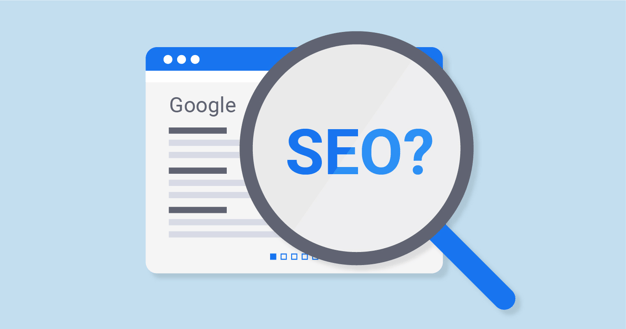eCommerce Marketing Budget: Everything You Need To Know
A constant question that comes to the mind of any e-commerce is how much money should be spent on marketing to achieve the desired results. This is such a tricky question, especially with the vitality of marketing for any online store.
Determining your marketing budget is not a spray-and-pray tactic. There is a tiny strand between what is too much and too little to be spent on marketing. Therefore, you need to think wisely when determining your marketing budget.
As we always say, we have got you covered.
In this article, we will solve the mystery of a suitable e-commerce marketing budget, tips on planning it, how to allocate it, and where to spend your budget.
The Fundamentals OF An E-commerce Marketing Budget
The rule of thumb for most e-commerce businesses is that 8 to 10% of their entire budget should go into marketing activity, including digital marketing strategies. However, today the e-commerce world has reached new heights in popularity and necessity. Therefore, the budget allocated towards marketing should also increase.
WebFX's 70-20-10 rule is now becoming popular, accounting for time and money spent.
Spend 70% of your budget on the present: Spending 70& of your funds on marketing strategies that work successfully. Whether digital marketing or your best-selling product, spend money on it to yield better results.
Keep 20% for the following steps: keep 20% of your marketing budget for e-commerce for strategies that you would apply to target new audiences, for promoting a newly-launched project or service.
The remaining 10% for the experiments: The remaining 10% of your marketing budget should be kept for applying new and experimental marketing strategies to sell your services or products, such as new technology or trending marketing strategies you have not experimented with yet. This would give your e-commerce business a competitive edge and help you stay ahead of your competitors.
How To Setup Your e-Commerce Marketing Budget?
.webp?width=714&height=350&name=ecommerce%20marketing%20budget%20(1).webp) Images source: shopify.com
Images source: shopify.com
As an online store, you have to be aware of how to allocate your e-commerce marketing budget. This will lead to an increased return on investment and higher conversion rates. So, let’s see how to set things up.
1- Identify Your Percentage
The first thing you need to consider to allocate your e-commerce marketing budget is to identify your percentage compared to your revenues.
To prevent overspending, marketers argue that B2C online businesses allocate around 15% of their revenues to marketing (Hubspot,2022). Such a percentage might vary based on the novelty of your online business.
For example, if you are a new entrant, you are required to spend more on your marketing budget compared to a well-established business.
The thing is, you have to think wisely and identify the suitable percentage of your revenues to be allocated to your marketing budget.
2- Identify Your Goals
Once you identify your marketing budget as a percentage of your revenues, you must identify your goals.
Your goals are the compass of your marketing budget. They will pinpoint the aspects that you should spend on to reach your desired goals.
Your goals might be increasing visibility and awareness, maximizing sales, or increasing customer engagement.
Accordingly, you will be able to direct your budget to achieve the required goals.
4- Calculate All Of Your Costs
To be able to set up your e-commerce marketing budget effectively, you will have to calculate all of your costs.
This involves everything related to website creation, receiving an order, fulfilling it, shipping it, and providing customer support.
In addition, you have to measure your customer acquisition costs and if this customer will return for another purchase; this is known as customer lifetime value (LTV).
All of these costs are important to identify to start setting up your marketing budget. They will work as a road map to determine the amount of money that should be allocated to marketing.
5- Know About Your Customers
Knowing your customers is a key aspect of setting up your marketing budget. You have to understand your target audience, their behaviors, their preferences, and where they spend most of their time at.
This will help you to allocate your marketing budget in the right place, in the right channel, and in the most suitable content.
6- Analyze Historical Data
A key tip to allocate your e-commerce marketing budget is to analyze historical data. For example, you analyze the performance of your previous campaigns and the best working channels for your e-commerce.
This will simply allow you to learn from your past performance to allocate your marketing budget in the best way possible.
7- Test & Repeat
You can’t just blindly put all of your marketing budgets into a certain tactic or a certain channel. Therefore, continuously testing the performance of your marketing channels and practices is the key to a successful marketing budget.
Evaluate the effectiveness of your marketing efforts compared to your determined goals. Thus, you will be able to identify the point of deficiencies to stop allocating more money to these areas.
As a result, you will be able to allocate your budget to suitable efforts to achieve your desired goals.
8- Know your market
Before investing significantly in your e-commerce business's marketing activities, you need to understand your actual market. You should be aware of what your competitors are doing in order to plan the best marketing strategies to stay ahead of the competition. By running a competitor analysis, you will learn where others stand and what you need to invest in to drive success for your e-commerce business.
What Are The Best Channels To Allocate Your Marketing Budget Into?
Once you decide the amount of money that will be allocated to your marketing budget, it becomes necessary to spend this money in the right place. Your choice of a suitable channel should align with your desired goals.
Therefore, we will take you through some of the best channels where you should spend your budget at:
- SEO

You should always consider having organic reach for your e-commerce. Trust us; organic reach does wonders.
Customers who are searching for you are the ones who are already going through their conversion funnel. Thus, they are potential customers that should never be abandoned.
One of the best channels that drive organic reach to your e-commerce is search engines. Therefore, you should focus on Search Engine Optimization (SEO) by providing content that is highly ranked on SERPs.
You know what they say, content is king. Thus, you should constantly deliver valuable content for better ranking on search engines. In addition, you will have to use certain keywords that customers use and create content around them.
This will enable your online store to acquire new visitors and increase your brand visibility.
-
Influencer Marketing
If your goal is raising brand awareness, then your e-commerce marketing budget should be allocated to influencer marketing.
Collaborating with influencers will ensure that your products will reach a large number of potential customers. Therefore, you should direct your budget to the right influencer to achieve optimal results.
Additionally, influencer marketing creates a psychological phenomenon known as social proof, which makes customers more likely to imitate these influencers and make a purchase.
Widely known influencers will require a larger budget compared to micro-influencers. Thus, you will have to think wisely about your budget and direct it to suitable influencers that will help you achieve your goals.
-
Email Marketing
Even though email marketing may sound like an old channel, it is one of the best platforms to include in your e-commerce marketing budget. In addition, it is one of the cheapest channels as well.
However, email marketing can assist your online store in doing plenty of marketing tasks. For instance, reminding customers of their products in the cart and reducing cart abandonment rates, sending welcome messages, sharing offers and discounts, and gathering customers' feedback.
Accordingly, email marketing is considered a multipurpose marketing channel, so you will have to allocate your e-commerce marketing budget to it.
- Social Media Marketing
Once we mention marketing, we have to mention social media platforms. It is necessary to allocate part of your e-commerce marketing budget to social media.
Social media platforms have millions and even billions of daily active users. Thus, it is a perfect channel to work on for your marketing efforts.
It gives you the chance to develop tailored messages delivered specifically to your target audience. Hence, increasing customer engagement.
The thing is, you will have to choose the right social media platform based on your target audience. To elaborate, if your audience is Gen-Z, then TikTok and Snapchat are your perfect places.
Always keep in mind that your e-commerce marketing budget should be allocated between a group of different channels to achieve optimal results.
You can try the 70-20-10 rule. Allocate 70% of your budget to channels that undoubtedly perform well, 20% to channels that are working with competitors, and you are figuring things out, and 10% to channels that you lack experience at but want to try.
The 70-20-10 rule will enable you to combine different channels while testing things with caution.
Final Thoughts
A proper allocation of your e-commerce marketing budget is the basis for a strong marketing strategy for your online store.
Therefore, paying extra attention to the steps needed to set up your marketing budget and directing it to the right channels is crucial for the success of your online business.
We always say that knowing your audience is a necessary step for any of your marketing efforts. This is applied to your budget allocation as well. Thus, to know your target audience accurately, auto-segmentation is the right place to start from.
Converted.in is a marketing automation tool that can handle your auto-segmentation process effortlessly. In addition, it offers plenty of other services like email marketing, automated ads, and a powerful product recommendation engine.
For all of this and more, check out Convertedin and book your demo now!
 By
By
